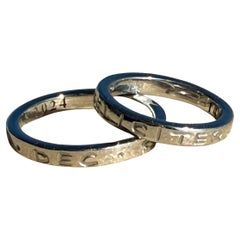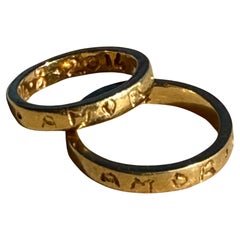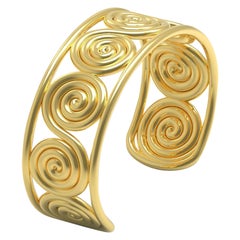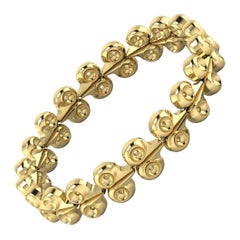About Romae Jewelry
The boutique ROMAE collection was created by a classical archaeologist and artist team who have spent the past 20 years living and working in Rome, Italy. ROMAE’s jewelry is inspired by ancient examples found in archaeological excavations across the lands that once used to be encompassed in the Roman empire. Each piece is crafted with love and care, and a desire to recall the elegance and eternal appeal of the original. With our own designs, we are happy to make ancient Roman jewelry current, fashionable, and available, once again.

Established in 20201stDibs seller since 2021
Featured Pieces
2010s Italian Classical Roman Wedding Rings
Gold, White Gold, Yellow Gold, 18k Gold
2010s Italian Wedding Rings
Gold, 14k Gold, White Gold, Yellow Gold
2010s Italian Classical Roman Cuff Bracelets
Gold, 22k Gold, Yellow Gold
2010s European Classical Greek Link Bracelets
Gold, 18k Gold, Yellow Gold
Antique 15th Century and Earlier Italian Classical Roman Drop Earrings
18k Gold, Yellow Gold
Antique 15th Century and Earlier Italian Classical Roman Dangle Earrings
18k Gold, Yellow Gold, Gold
21st Century and Contemporary Italian Contemporary Fashion Rings
24k Gold, Yellow Gold
Antique 15th Century and Earlier Italian Classical Roman Fashion Rings
Yellow Gold, Gold, 18k Gold
Antique 15th Century and Earlier Italian Classical Roman Signet Rings
Gold, 18k Gold, Yellow Gold
Antique 15th Century and Earlier Italian Classical Roman Signet Rings
Gold, 22k Gold, Yellow Gold
Antique 15th Century and Earlier Italian Classical Greek Pendant Necklaces
Gold, 22k Gold, Yellow Gold
Antique 15th Century and Earlier European Classical Greek Link Bracelets
Gold, 18k Gold, Yellow Gold
More About Romae Jewelry
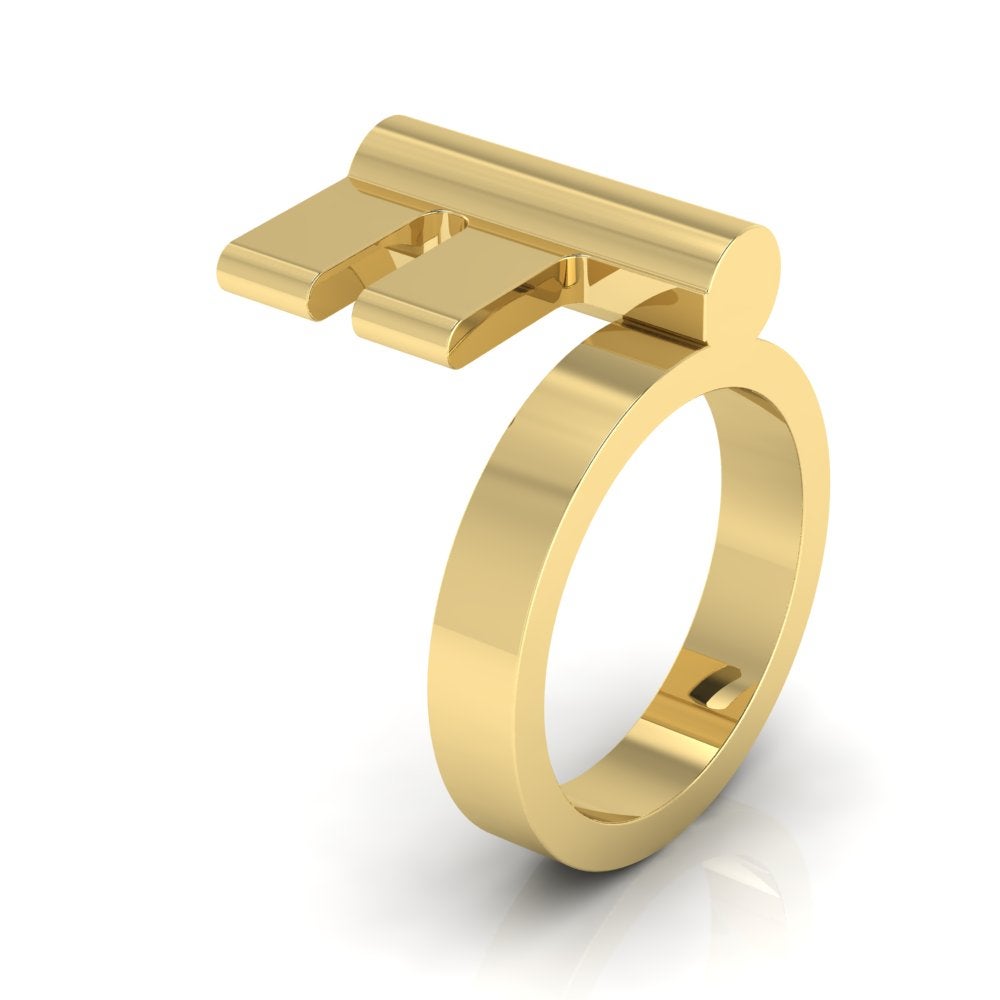
Our striking "Securitas" ring, based on an ancient Roman key ring dating to between the first and third centuries AD.
Our stately "Nimrud" cufflinks, which have a long tradition going back to the ancient Near East! The floral motif is seen on a cuff bracelet adorning male figures in the very famous alabaster relief images from the palace at Nimrud, which date to c. 880 BC.
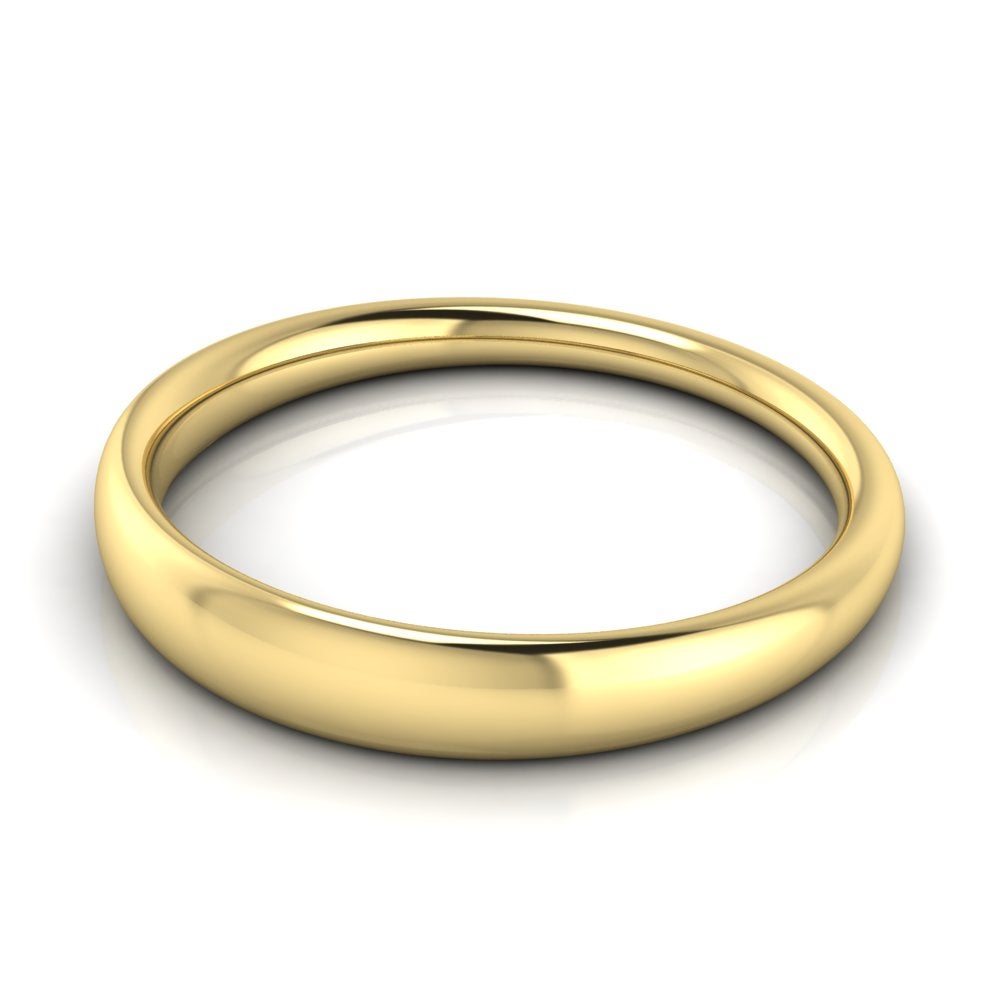
Our "Fortuna" bracelet, solid luxury, inspired by an example found in the excavations of the ancient Roman villa at Oplontis, in the Bay of Naples, and dating to before AD 79.

Love as an unbreakable bond - this is the message of our signature "Amor" ring, based on a gorgeous Hellenistic Greek example dating to the third century BC.

Our lavish "Luxus" ring is a statement of luxury, and is modeled after an original from Cyprus dating to the sixth century BC.
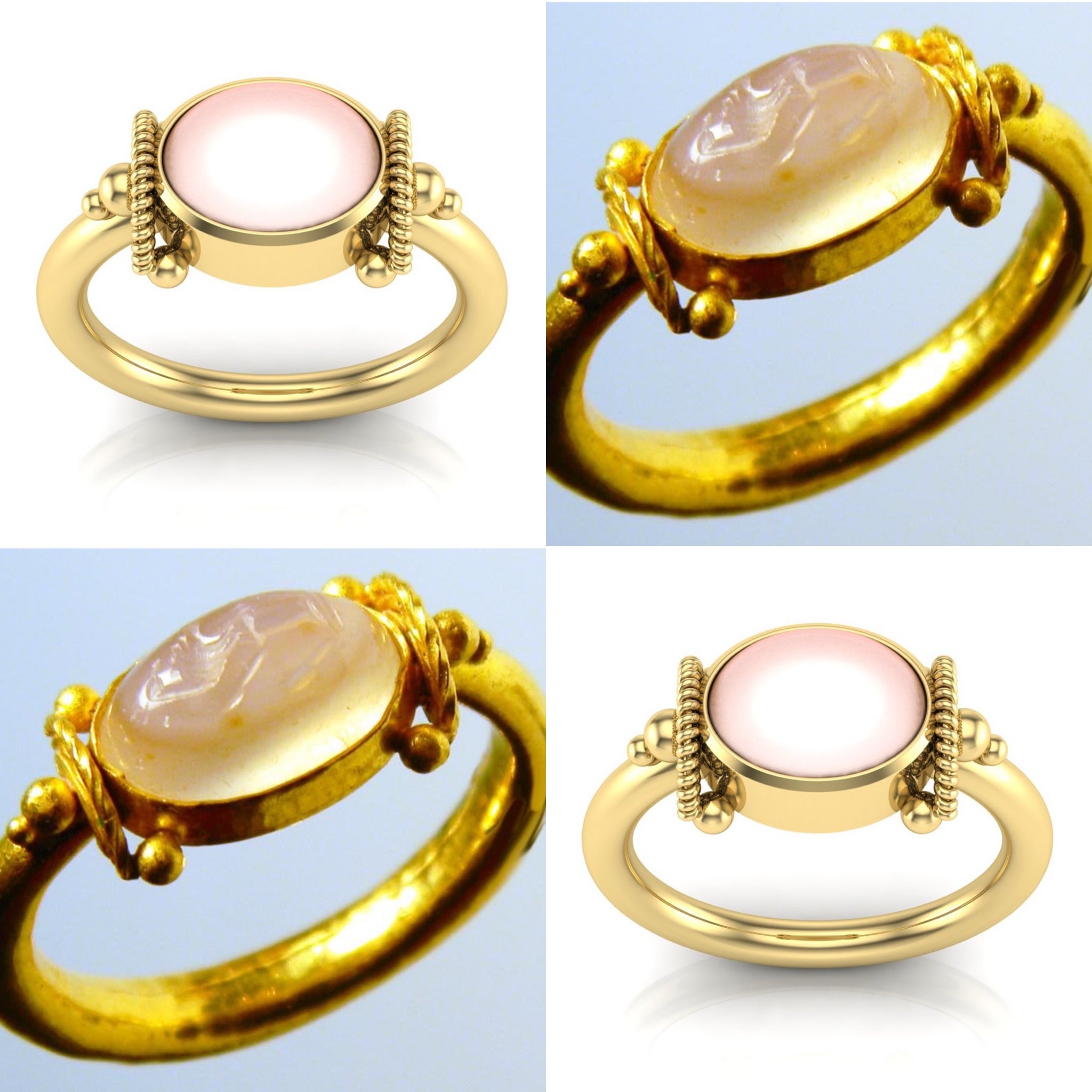
Our "Vasilki" ring is based on an ancient gold example with an engraved white quartz stone, which dates to the first century AD. "Vasiliki" is a modern Greek name meaning "queen," or "royal." It is derived from the ancient Greek word "basileus" (βασιλεύς), or "king."
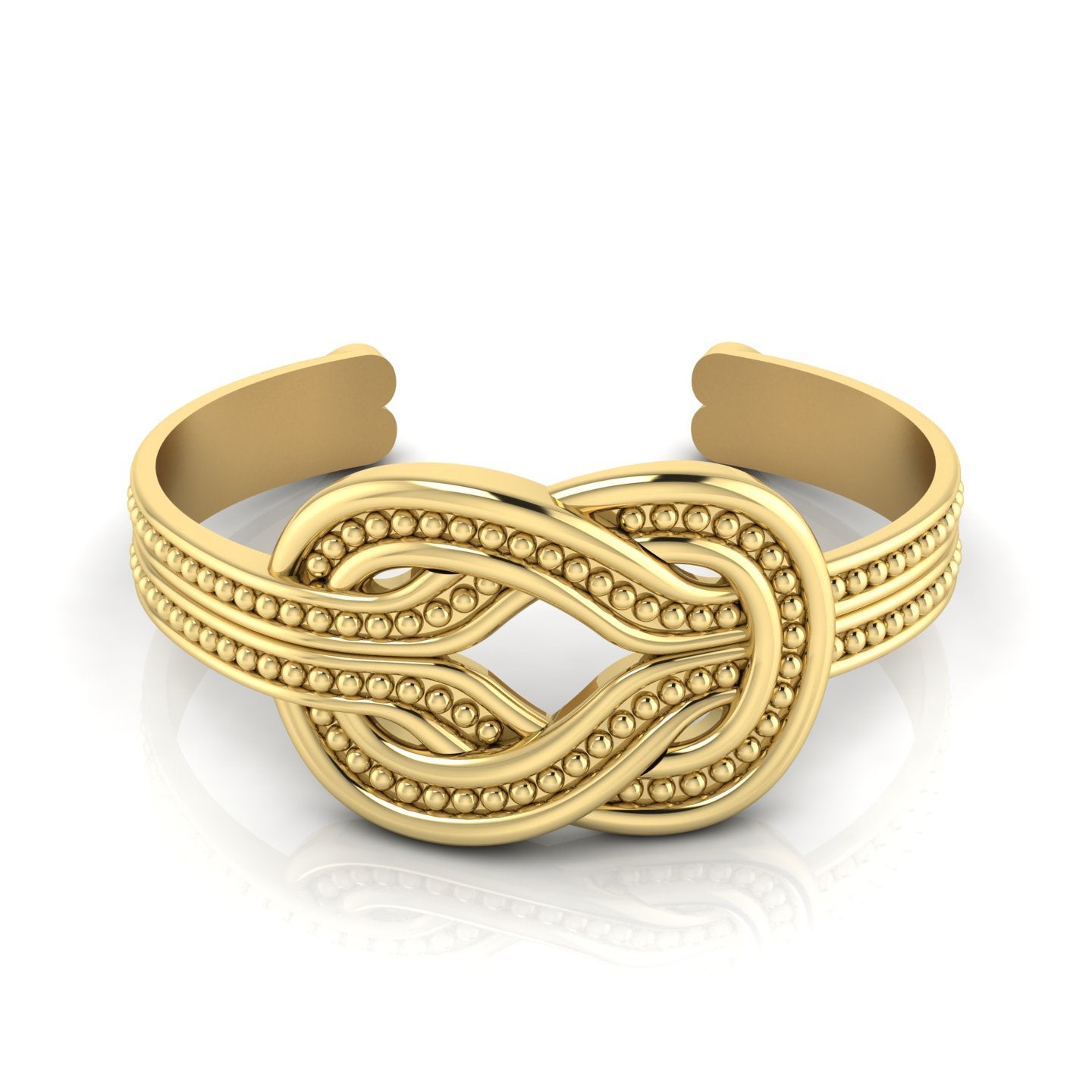
Our gorgeous "Firmitas" cuff bracelet depicts the "Hercules knot," and is modeled after the ornate clasp of a second century AD Roman bracelet. The Hercules knot originated in the ancient world. As a knot that would tighten and thus become even more stable when pulled, it quickly became a symbol for a strong bond, and thus a symbol for love and commitment. It is the origin of the phrase "tying the knot" when referring to marriage!
Our delicate and provocative "Zephyrus" pendant is based on a seventh century BC example from Lyktos, Crete.
The astounding design of this brooch comes from the fifth century BC temple of Athena Parthenos, the Parthenon, in Athens, Greece. The Parthenon's external ornamentation included gorgeous, elaborate three-meter tall marble akroteria in the form of acanthus plant stalks and tendrils that graced the apex of the roof above the pediment in both the front and the back of the building.
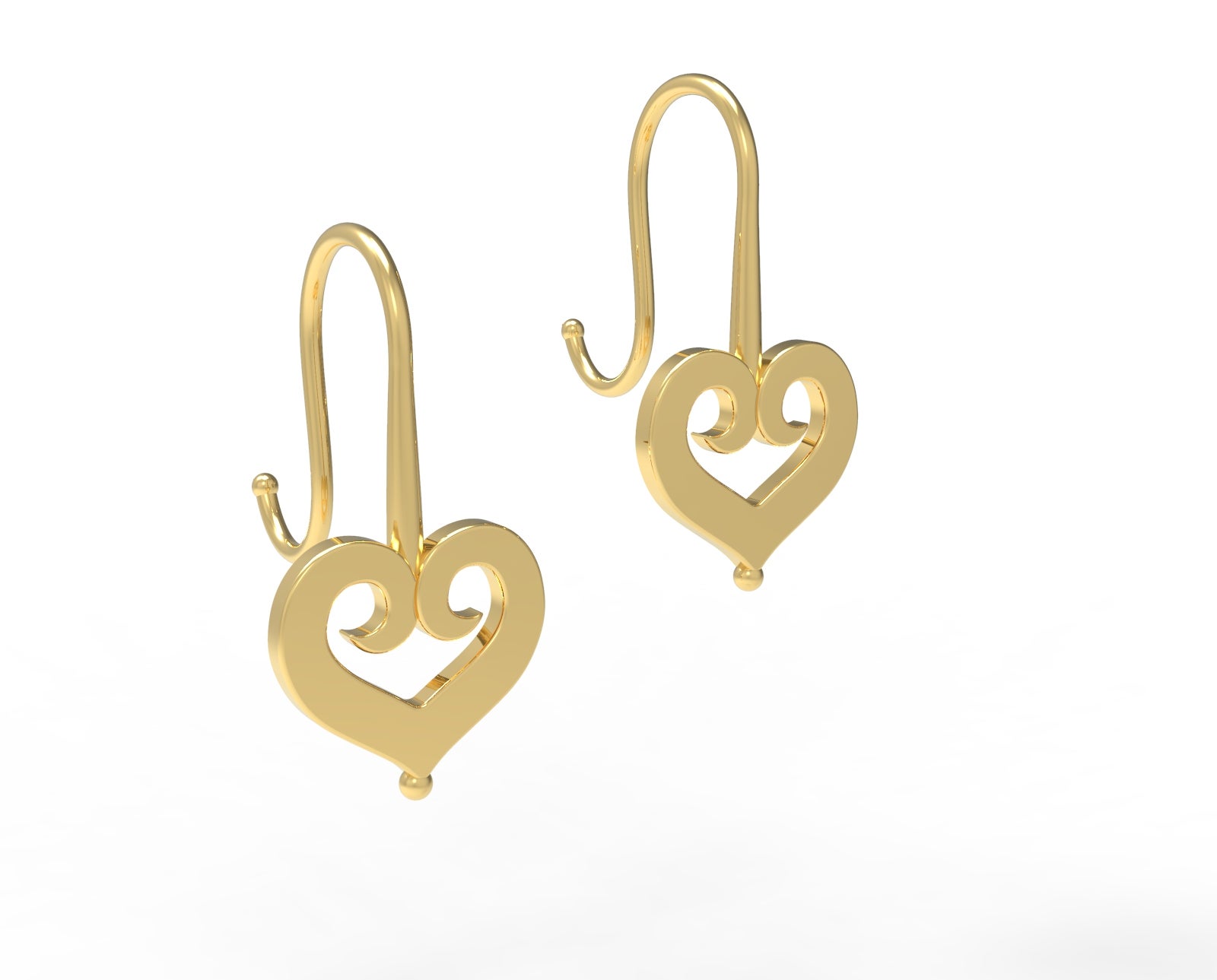
Our darling "Octavia" earrings are delicate and sweet, and have a design that is so current! In fact, the pair is modeled after an ancient Roman example. The design on the front was a very popular motif in Roman art, and while it appears to depict a heart, it was, in fact, a full and beautiful ivy leaf. As one of the attributes of the god Dionysus, ivy was a powerful symbol associated with eternal happiness.

